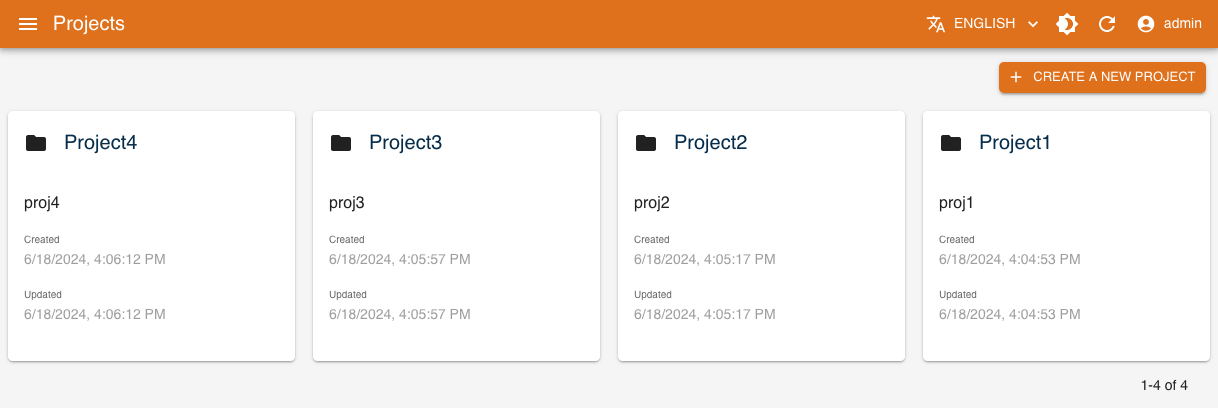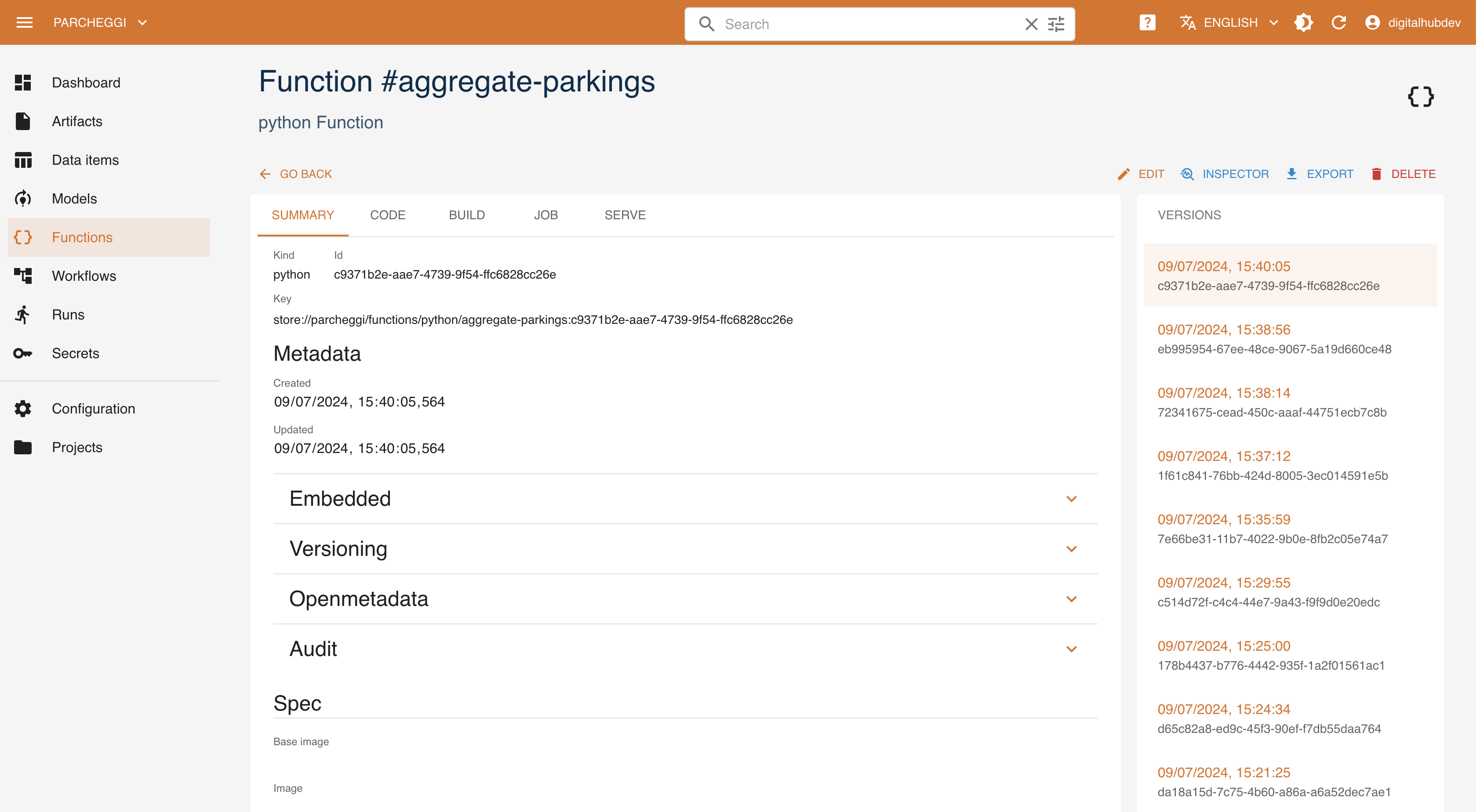Core UI
The Core console is a front-end application backed by the Core API. It provides a management interface for the organization and operations over the Data Science Projects and the associated entities, such as:
- functions of various runtimes (see the Functions and Runtimes section for details), as well as their executions (runs) grouped by the corresponding operations (tasks)
- workflows - composite pipelines combining executions of different functions
- dataitems - structured Data Items managed by the project
- artifacts - unstructured files related to and managed by the project
- models - versioned ML Model artifacts with their metrics and metadata (see ML Models section for details)
When you access the console, you land to the project management page, where you can create or delete projects.
Note that all the functionality that is performed via UI console through the Core API can be also performed using the platform management Python SDK reflecting management of the same platform entities.
Create a Project
Start by clicking the CREATE button.

Fill the form's properties.

Following the selection of a project, you can get an overview of the associated objects on its dashboard and manage them on their dedicated pages.
Dashboard
The console dashboard shows the resources that have been created with a series of cards and allows you to quickly access them. You can see the runs performed and their respective status, as well as workflows, data items and functions.

Objects
Through the console it is also possible to manage directly the entities related to the project and perform different operations over those. This amounts not only to CRUD (create, update, delete, and read) operations, but also tracking relationships, viewing detailed metadata and versions, executing functions and pipelines, etc.
Functions
Functions define the executable procedures implemented in various ways that can be run by the platform. Via the console the user can
create new functions by selecting the corresponding runtime and, based on that, providing its specification, e.g., source code. The console lists the existing versions of each function, its specification and code (if available), as well as different tasks that can be performed over the function in the corresponding runtime. For example, in the case of Python runtime, it is possible to build the function (i.e., generate the corresponding Docker image and cache in the registry), to run the function as job (to be executed on the Kubernetes), or to serve the function (i.e., expose it as a service).

Within the tab corresponding to the specific task, the user can access the list of runs executed over the function, the status of execution, the execution log. It is also possible to create new runs of the task, defining the specific parameters and configurations.
Workflows
Workflows represent a composition of function executions that is run over the platform, specifying their dependencies (in terms of data and order). This allows for creating complex pipelines for AI/ML and data operations. Currently, the implementation of the workflow relies on the Kubeflow Pipelines framework, that in turn relies on Kubernetes Argo Workflows so that each step of the workflow is executed as a single Kubernetes Job.
From the console it is possible to define a new workflow by providing the code of the pipeline and running the pipeline task. As in case of function runs, the execution of the pipeline is being tracked, as well as the progress of single steps, and the corresponding log.
Dataitems
Through Dataitems the project may define the relevant structured and semi-structured datasets. Dataset may created manually, starting from a reference to an URL of the file or DB table, or may be produced as a result of some data transformation function execution. As in case of the functions, the dataitems are equipped with the relevant metadata (e.g., creation and changes, tags, ownership, etc). Furthermore, the datasets structured as tables (i.e., table kind datasets) are equipped with the derived schemas and profiling and data preview.
Through the console it is possible to manage the datasets, i.e., create (from a URL or from file), update and delete them.
Artifacts
Similar to dataitems, Artifacts it is possible to explicitly capture the relevant unstructured objects and files. Artifacts may be of arbitrary type, and equipped with a generic metadata properties.
Through the console it is possible to manage the artifacts, i.e., create (from a URL or from file), update and delete them.
ML Models
ML Models represent a specific type of artifacts, which are produced by the AI tranining activites and represent the datasets used for inference operations. While managed in the same manner as other types of entities, ML Models may have a specific set of metadata and specification attributes, such model kind, metrics, algorithm and framework specification, etc.
ML Models are further used by the inference services.
Secrets
When executing operations with the platform, the execution might need access to some sensitive values, for example to access data residing on a data-store that requires credentials (such as a private S3 bucket), access a private repository, or many other similar needs.
The platform provides the functionality to manage these values, reffered to as Secrets, both through UI and SDK, where it is possible to associate the key-value pair to the project. The data is managed as Kubernetes secrets and is embedded in the execution of a run that relies on that.
The management of secrets allows through the console to create, delete, and read the secret values.
Versioning
All entities operated by Core are versioned. When you view the details of an object, all of its versions are listed and browsable. Moreover, when you view a dataitem, its schema and data preview are available.